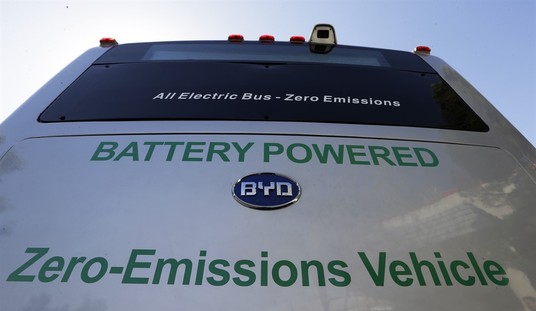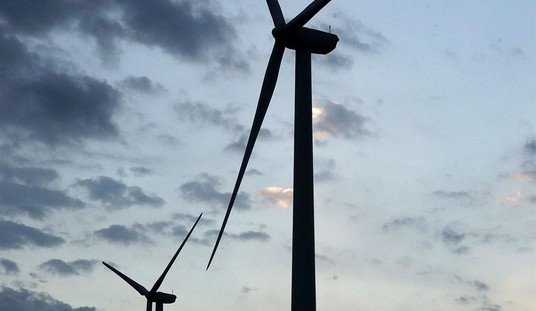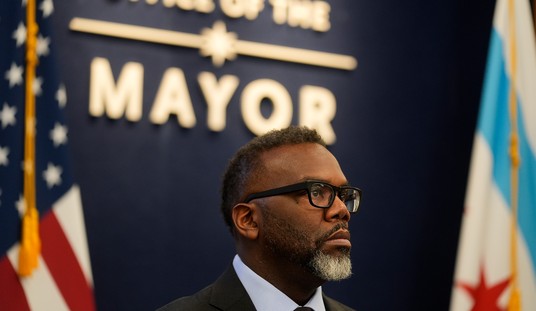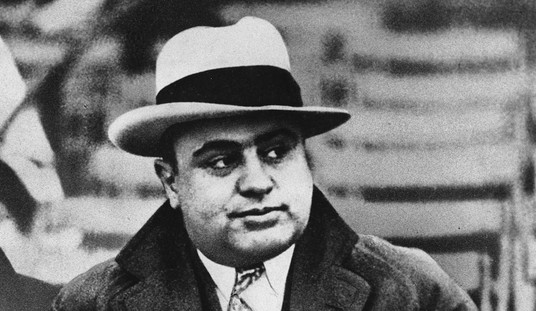Today’s GDP report was perhaps a bit … unexpected, given the recent durable-goods order report for March. Positive growth returned, albeit to stagnation level, in the first quarter of 2013:
Real gross domestic product — the output of goods and services produced by labor and property located in the United States — increased at an annual rate of 2.5 percent in the first quarter of 2013 (that is, from the fourth quarter to the first quarter), according to the “advance” estimate released by the Bureau of Economic Analysis. In the fourth quarter, real GDP increased 0.4 percent.
The Bureau emphasized that the first-quarter advance estimate released today is based on source data that are incomplete or subject to further revision by the source agency (see the box on page 3 and “Comparisons of Revisions to GDP” on page 5). The “second” estimate for the first quarter, based on more complete data, will be released on May 30, 2013.
The increase in real GDP in the first quarter primarily reflected positive contributions from personal consumption expenditures (PCE), private inventory investment, exports, residential investment, and nonresidential fixed investment that were partly offset by negative contributions from federal government spending and state and local government spending. Imports, which are a subtraction in the calculation of GDP, increased.
Don’t break out the bubbly just yet. Much of this growth came from “an upturn in private inventory investment,” meaning that final sales were significantly lower. In fact, real final sales of domestic product — sales minus inventory expansion — only grew 1.5% in Q1. That’s actually lower than Q4’s final real final sales figure of 1.9%.
However, there was better news in consumer purchasing:
Real personal consumption expenditures increased 3.2 percent in the first quarter, compared with an increase of 1.8 percent in the fourth. Durable goods increased 8.1 percent, compared with an increase of 13.6 percent. Nondurable goods increased 1.0 percent, compared with an increase of 0.1 percent. Services increased 3.1 percent, compared with an increase of 0.6 percent.
Bear in mind that economists have been lamenting the depressive impact of the expiration of the payroll-tax-holiday at the beginning of the quarter. As I have said all along, that’s nonsense. PCEs didn’t increase when the payroll-tax holiday was implemented (in fact, the growth level dropped all through 2011 as compared to 2010), and its expiration wasn’t going to decrease it. That consumer activity still didn’t get the US economy to push past the 1.5% increase in real final sales, though, and we are still sputtering along in stagnation.
The Wall Street Journal notes that the results missed expectations, which hovered at 3.2%:
The U.S. economy failed to gather as much steam as expected in the first quarter, potentially setting up another year of sluggish gains with signs already emerging of slowing hiring and investment. …
Economists surveyed by Dow Jones Newswires had forecast a 3.2% annualized expansion. Still, the GDP gain represented a rebound from the 0.4% growth in the prior quarter.
The economy has now grown for 15 consecutive quarters, but the average pace—just above 2% annually—is weak by historical standards.
The primary driver of the faster growth was a pickup in consumer spending. Personal-consumption expenditures grew 3.2%, the best pace since the end of 2010.
The numbers suggest that at least initially, American’s weren’t hamstrung by a January tax increases, although other government data suggested consumers began to slow their spending in March after a strong start to the year.
What was going on in March? Oh yes, the Nightmare on Sequester Street hyperbole.
Update: CBS is unexpectedly unimpressed:
The U.S. economy grew 2.5 percent in the first three months of 2013, undershooting many forecasts that expected stronger growth.
Many economists had expected growth of 3 percent or higher. The increase in GDP, which represents the government’s initial estimate of economic output in the period and which is subject to revision, is not fast enough to support significant job-creation. The economy expanded at a meager 0.4 percent rate in the fourth quarter of 2012 and 2.2 percent for the year. …
For now, as the latest economic figures show, victory remains elusive. Plunging job-creation in March stirred fears that the economy was sputtering after two straight months of solid job growth. Retail sales shrank last month as consumers pulled back on spending. That appeared due to a move by Congress and President Barack Obama to allow Social Security taxes to rise in January, which reduced people’s paychecks and eroded their purchasing power.
Elsewhere in the economy, orders for aircraft and other big-ticket items also have sunk in recent weeks, indicating that companies expect business to slow.
All of which we knew, by the way, yesterday. So why were economists expecting to hear better news than this? Frankly, I was surprised the Q1 GDP came in as high as it did on the initial estimate.








Join the conversation as a VIP Member